Growing Cucumbers at Home can seem daunting, but trust me, with a few clever tricks and DIY solutions, you’ll be harvesting crisp, refreshing cucumbers before you know it! Imagine biting into a juicy cucumber you nurtured from a tiny seed – the taste is simply unmatched. For centuries, cucumbers have been cultivated across the globe, from their origins in India to becoming a staple in Mediterranean diets. Their versatility in salads, pickles, and even refreshing drinks makes them a beloved vegetable for many.
But let’s face it, store-bought cucumbers often lack that vibrant flavor and satisfying crunch. Plus, who knows what chemicals they’ve been exposed to? That’s where the magic of growing cucumbers at home comes in! This article is packed with easy-to-follow DIY hacks that will help you overcome common challenges like limited space, pests, and diseases. I’ll share my tried-and-true methods for maximizing your yield, even if you only have a small balcony or patio. Get ready to ditch the grocery store cucumbers and enjoy the satisfaction of growing your own delicious, organic bounty. Let’s get started!
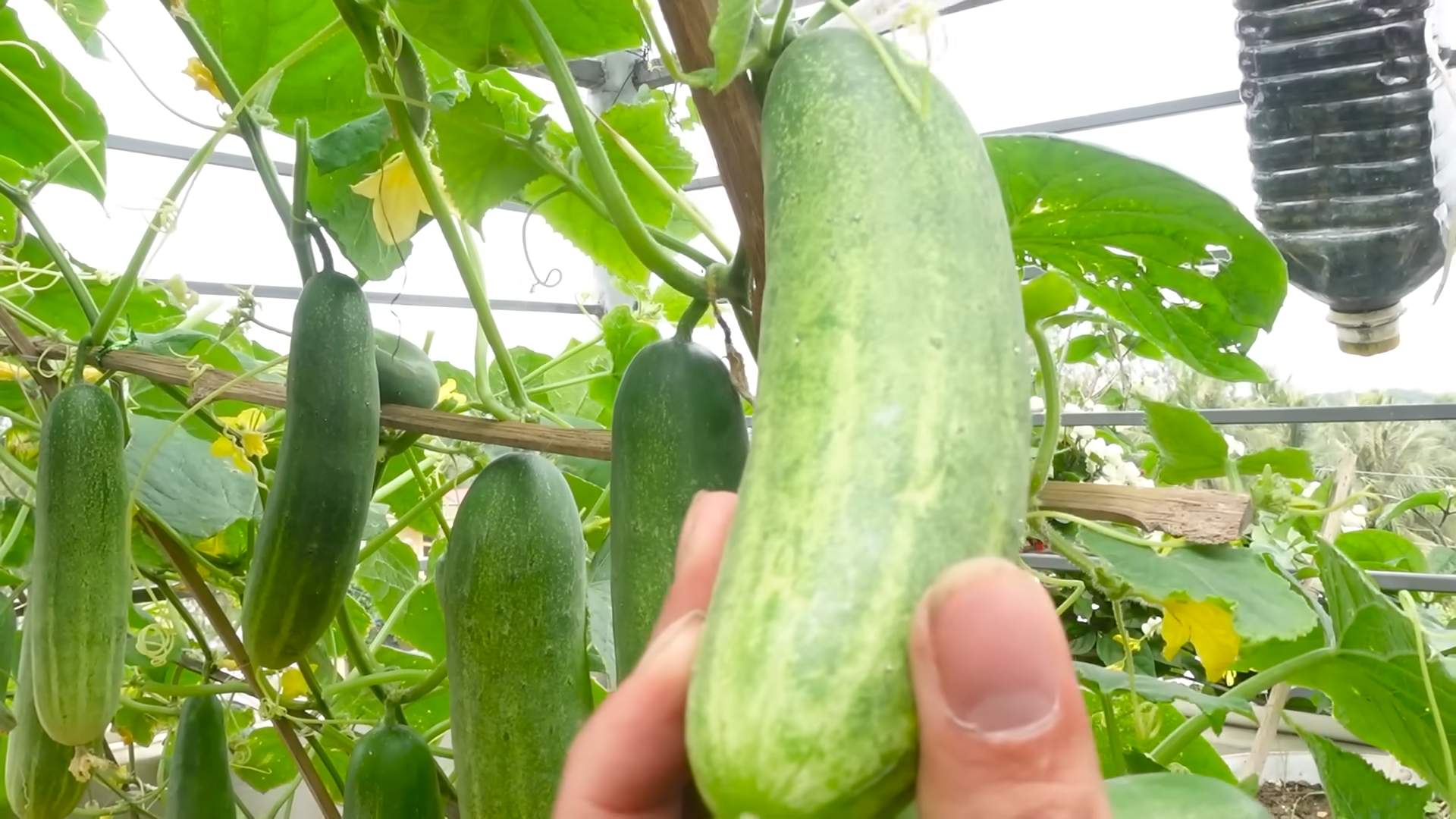
Growing Cucumbers at Home: A Beginner’s Guide
Okay, so you want to grow cucumbers at home? Awesome! It’s totally doable, even if you don’t have a huge garden. I’ve grown cucumbers in everything from raised beds to containers on my patio, and I’m here to share everything I’ve learned. Get ready for some crunchy, refreshing goodness straight from your own backyard (or balcony!).
Choosing Your Cucumber Variety
First things first, let’s talk cucumbers. There are tons of different varieties, and the best one for you will depend on your space and what you plan to do with your cucumbers.
* Slicing Cucumbers: These are your classic cucumbers, perfect for salads and sandwiches. Think ‘Marketmore’ or ‘Straight Eight’.
* Pickling Cucumbers: Smaller and often bumpier, these are ideal for making pickles. ‘National Pickling’ and ‘Boston Pickling’ are popular choices.
* Burpless Cucumbers: These are bred to have lower levels of cucurbitacin, which can cause bitterness and, well, burping. ‘Sweet Slice’ and ‘Armenian’ are good options.
* Bush Varieties: If you’re short on space, bush varieties are your best bet. They’re compact and don’t require trellising. ‘Spacemaster’ and ‘Bush Champion’ are great examples.
Consider your climate too! Some varieties are more heat-tolerant than others. Read the seed packet descriptions carefully to find the perfect match for your growing conditions.
Starting Your Cucumber Seeds
You have two options here: starting seeds indoors or direct sowing them in your garden. I usually start mine indoors to get a head start, especially if I live in an area with a shorter growing season.
Starting Seeds Indoors:
1. Gather Your Supplies: You’ll need seed starting trays or small pots, seed starting mix (not regular potting soil!), cucumber seeds, and a spray bottle.
2. Sow the Seeds: Fill your trays or pots with seed starting mix. Make a small indentation (about ½ inch deep) in the center of each cell or pot. Place 2-3 cucumber seeds in each indentation. Cover lightly with more seed starting mix.
3. Water Gently: Use a spray bottle to gently moisten the soil. You don’t want to soak it, just keep it damp.
4. Provide Warmth and Light: Cucumber seeds need warmth to germinate. A heat mat can be really helpful, but a warm spot in your house will also work. Once the seedlings emerge, they’ll need plenty of light. A sunny windowsill might work, but a grow light is even better.
5. Thin the Seedlings: Once the seedlings have their first true leaves (the second set of leaves that appear after the initial seed leaves), thin them to one seedling per cell or pot. Snip off the weaker seedlings at the soil line with scissors. Don’t pull them out, as this can disturb the roots of the remaining seedling.
6. Harden Off the Seedlings: Before transplanting your seedlings outdoors, you need to “harden them off.” This means gradually exposing them to outdoor conditions over a period of about a week. Start by placing them outside in a sheltered spot for an hour or two each day, gradually increasing the amount of time they spend outdoors.
Direct Sowing Seeds:
1. Prepare the Soil: Choose a sunny spot in your garden with well-drained soil. Amend the soil with compost or other organic matter to improve its fertility and drainage.
2. Sow the Seeds: Sow the seeds directly into the soil about ½ inch deep and 1-2 inches apart.
3. Water Gently: Keep the soil consistently moist until the seeds germinate.
4. Thin the Seedlings: Once the seedlings emerge, thin them to the desired spacing (check your seed packet for recommendations).
Transplanting Your Cucumber Seedlings
Whether you started your seeds indoors or direct sowed them, you’ll eventually need to transplant your cucumber seedlings to their final growing location.
1. Choose a Sunny Location: Cucumbers need at least 6-8 hours of sunlight per day.
2. Prepare the Soil: Again, make sure the soil is well-drained and amended with compost or other organic matter.
3. Dig a Hole: Dig a hole that’s slightly larger than the root ball of your seedling.
4. Gently Remove the Seedling: Carefully remove the seedling from its pot or tray. If the roots are tightly bound, gently loosen them with your fingers.
5. Place the Seedling in the Hole: Place the seedling in the hole, making sure the top of the root ball is level with the surrounding soil.
6. Fill the Hole: Fill the hole with soil and gently firm it around the base of the seedling.
7. Water Thoroughly: Water the seedling thoroughly after transplanting.
Caring for Your Cucumber Plants
Now comes the fun part: watching your cucumber plants grow! Here’s what you need to do to keep them happy and healthy.
* Watering: Cucumbers need consistent moisture, especially when they’re fruiting. Water deeply and regularly, especially during hot, dry weather. Aim for about 1 inch of water per week. Avoid overhead watering, as this can lead to fungal diseases. Drip irrigation or soaker hoses are ideal.
* Fertilizing: Cucumbers are heavy feeders, so they need regular fertilization. Use a balanced fertilizer (like 10-10-10) every few weeks, or amend the soil with compost tea.
* Trellising: Most cucumber varieties benefit from trellising. This helps to keep the fruits off the ground, which prevents rot and makes them easier to harvest. It also improves air circulation, which reduces the risk of disease. You can use a trellis, a fence, or even a tomato cage.
* Weeding: Keep the area around your cucumber plants free of weeds. Weeds compete with the cucumbers for water and nutrients.
* Pest Control: Keep an eye out for pests like aphids, cucumber beetles, and squash bugs. Hand-picking them off the plants is often effective. You can also use insecticidal soap or neem oil.
* Disease Control: Cucumbers are susceptible to fungal diseases like powdery mildew and downy mildew. To prevent these diseases, provide good air circulation, avoid overhead watering, and use a fungicide if necessary.
Harvesting Your Cucumbers
The moment you’ve been waiting for! Cucumbers are usually ready to harvest about 50-70 days after planting, depending on the variety.
* Check the Size: Harvest your cucumbers when they’re the desired size for their variety. Check your seed packet for specific recommendations.
* Look for Color: The color of the cucumber should be uniform and vibrant.
* Feel the Texture: The cucumber should be firm to the touch.
* Use a Knife or Pruners: Cut the cucumber from the vine with a sharp knife or pruners. Don’t pull it off, as this can damage the plant.
* Harvest Regularly: Harvest your cucumbers regularly to encourage the plant to produce more fruit.
Troubleshooting Common Cucumber Problems
Even with the best care, you might encounter some problems along the way. Here are a few common issues and how to deal with them.
* Yellowing Leaves: This can be caused by a number of factors, including overwatering, underwatering, nutrient deficiencies, or disease. Check the soil moisture and adjust your watering accordingly. Fertilize the plants if necessary. If you suspect a disease, treat with a fungicide.
* Bitter Cucumbers: Bitterness is usually caused by stress, such as inconsistent watering or high temperatures. Make sure your plants are getting enough water and shade during hot weather.
* Misshapen Cucumbers: This can be caused by poor pollination or nutrient deficiencies. Make sure there are plenty of pollinators in your garden. You can also hand-pollinate the flowers if necessary. Fertilize the plants with a balanced fertilizer.
* Lack of Fruit: This can be caused by a number of factors, including lack of sunlight, poor pollination, or nutrient deficiencies. Make sure your plants are getting enough sunlight. Hand-pollinate the flowers if necessary. Fertilize the plants with a balanced fertilizer.
Growing Cucumbers in Containers
Don’t have a garden? No problem! You can still grow cucumbers in containers.
1. Choose the Right Container: Select a large container that’s at least 12 inches in diameter and 12 inches deep.
2. Use a Good Quality Potting Mix: Don’t use garden soil in containers, as it can become compacted and poorly drained. Use a good quality potting mix instead.
3. Choose a Bush Variety: Bush varieties are best suited for container growing.
4. Provide Support: Even bush varieties may need some support. Use a
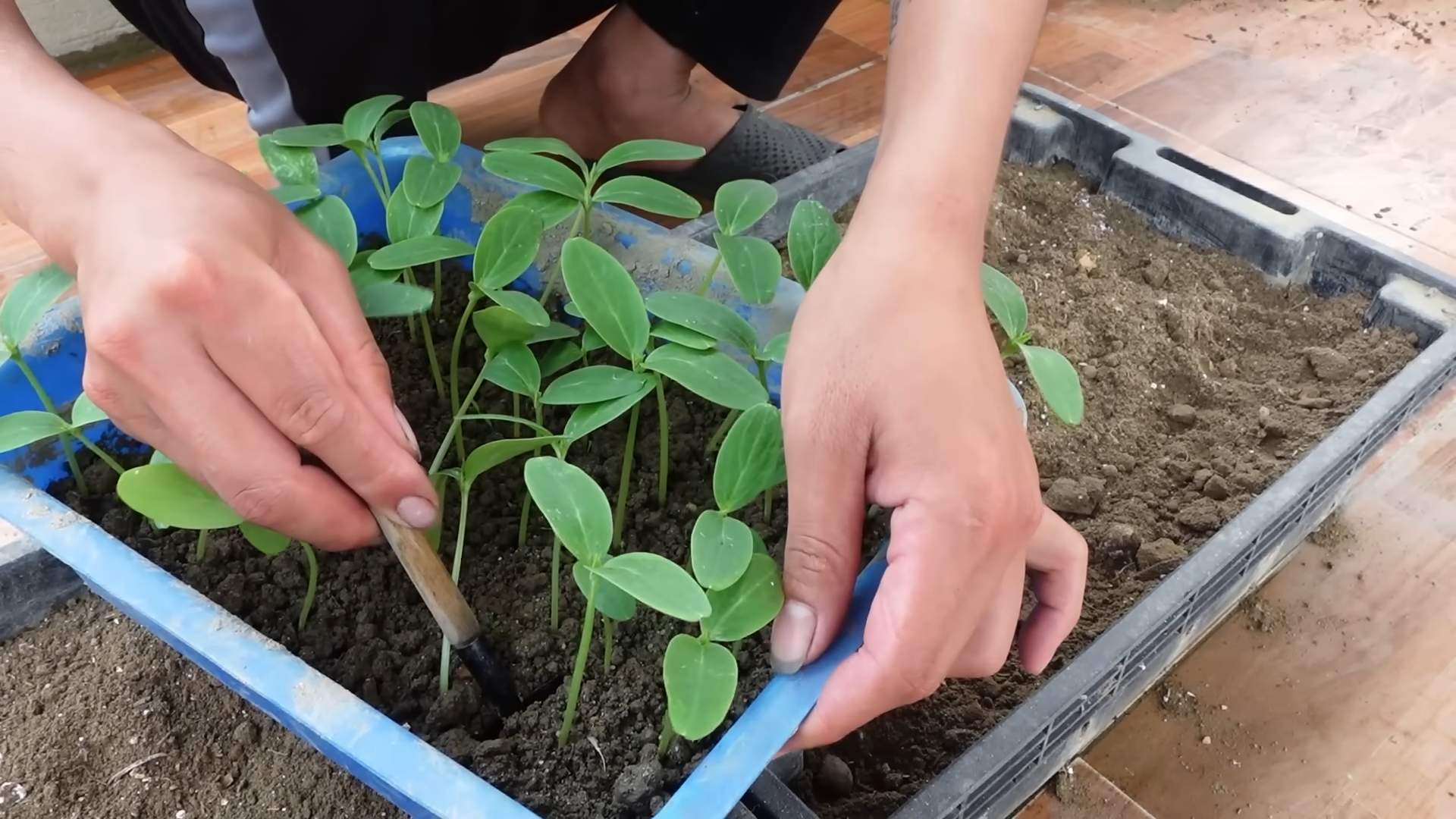
Conclusion
So, there you have it! Growing cucumbers at home, especially using our simple DIY trick, is not just a gardening endeavor; it’s an investment in fresh, flavorful produce and a rewarding connection with nature. We’ve shown you how to bypass common pitfalls and maximize your yield, all while keeping things simple and accessible, even for beginner gardeners.
Why is this DIY approach a must-try? Because it addresses the core needs of cucumber plants in a way that’s both efficient and cost-effective. By focusing on proper drainage, consistent watering, and adequate support, you’re creating an environment where your cucumbers can thrive. This translates to healthier plants, fewer diseases, and, most importantly, a bountiful harvest of crisp, delicious cucumbers. Forget those bland, store-bought cucumbers – imagine the satisfaction of biting into a cucumber you nurtured from seed to table!
But the beauty of gardening lies in its adaptability. Feel free to experiment with variations on our DIY trick. For instance, if you live in a particularly hot climate, consider adding a shade cloth to protect your plants from the harsh afternoon sun. If space is limited, explore vertical gardening options using trellises or even repurposed materials like old ladders or pallets. You can also tailor the soil mix to your specific needs, adding compost or other organic matter to improve its fertility.
Consider these variations to enhance your cucumber growing experience:
* Different Cucumber Varieties: Explore different cucumber varieties beyond the standard slicing cucumber. Try pickling cucumbers for homemade pickles, or lemon cucumbers for a unique flavor and appearance.
* Companion Planting: Plant basil, marigolds, or nasturtiums near your cucumbers to deter pests and attract beneficial insects.
* Watering Techniques: Experiment with different watering methods, such as drip irrigation or soaker hoses, to conserve water and ensure consistent moisture.
* Fertilizer Options: Use organic fertilizers like compost tea or fish emulsion to provide your plants with essential nutrients.
* Container Gardening: If you have limited space, grow cucumbers in large containers on your patio or balcony.
The possibilities are endless! The key is to observe your plants, learn from your experiences, and adapt your approach as needed.
We are confident that with a little effort and our DIY trick, you’ll be enjoying a steady supply of homegrown cucumbers in no time. Don’t be intimidated by the process – gardening is a journey, not a destination. Embrace the challenges, celebrate the successes, and most importantly, have fun!
We wholeheartedly encourage you to try this DIY trick for growing cucumbers at home. Once you’ve experienced the joy of harvesting your own fresh cucumbers, you’ll never look at store-bought ones the same way again. And we want to hear all about your experiences! Share your photos, tips, and stories with us in the comments below. Let’s build a community of cucumber-growing enthusiasts and learn from each other. Happy gardening!
Frequently Asked Questions (FAQ)
What is the best time to start growing cucumbers?
The best time to start growing cucumbers depends on your climate. In general, cucumbers are warm-season vegetables that thrive in temperatures between 65°F and 85°F (18°C and 29°C). If you live in a region with a long growing season, you can direct sow cucumber seeds outdoors after the last frost. If you live in a cooler climate, it’s best to start seeds indoors 3-4 weeks before the last frost and transplant them outdoors once the soil has warmed up.
How much sunlight do cucumbers need?
Cucumbers need at least 6-8 hours of direct sunlight per day to thrive. Choose a planting location that receives plenty of sunlight throughout the day. If you live in a particularly hot climate, consider providing some afternoon shade to protect your plants from the intense sun.
What type of soil is best for growing cucumbers?
Cucumbers prefer well-drained, fertile soil that is rich in organic matter. Amend your soil with compost or other organic matter before planting to improve its drainage and fertility. The ideal soil pH for cucumbers is between 6.0 and 7.0.
How often should I water my cucumber plants?
Cucumbers need consistent moisture to thrive. Water your plants deeply and regularly, especially during hot, dry weather. Aim to keep the soil consistently moist but not waterlogged. A good rule of thumb is to water your plants when the top inch of soil feels dry to the touch. Consider using a soaker hose or drip irrigation to deliver water directly to the roots of your plants.
Do cucumbers need support?
Yes, cucumbers benefit from support, especially vining varieties. Providing support allows the plants to climb, which improves air circulation, reduces the risk of disease, and makes harvesting easier. You can use trellises, stakes, or cages to support your cucumber plants.
What are some common cucumber pests and diseases?
Common cucumber pests include aphids, cucumber beetles, squash bugs, and spider mites. Common cucumber diseases include powdery mildew, downy mildew, and bacterial wilt. To prevent pests and diseases, practice good garden hygiene, such as removing weeds and debris, and rotate your crops regularly. You can also use organic pest control methods, such as insecticidal soap or neem oil, to control pests.
How do I know when my cucumbers are ready to harvest?
Cucumbers are typically ready to harvest when they are firm, green, and of the desired size. The exact size will depend on the variety of cucumber you are growing. Check the seed packet or plant tag for specific harvesting instructions. Harvest your cucumbers regularly to encourage continued production. Overripe cucumbers can become bitter and seedy.
Can I grow cucumbers in containers?
Yes, you can grow cucumbers in containers, but you will need to choose a large container that is at least 12 inches in diameter and 12 inches deep. Use a well-draining potting mix and provide your plants with plenty of sunlight and water. You may also need to provide support for your plants to climb.
What are some tips for maximizing cucumber yield?
To maximize your cucumber yield, follow these tips:
* Choose a sunny location with well-drained soil.
* Amend your soil with compost or other organic matter.
* Provide your plants with consistent moisture.
* Fertilize your plants regularly with a balanced fertilizer.
* Provide support for your plants to climb.
* Harvest your cucumbers regularly.
* Control pests and diseases.
* Consider succession planting to extend your harvest season.
How can I prevent my cucumbers from becoming bitter?
Cucumber bitterness is often caused by stress, such as inconsistent watering, high temperatures, or nutrient deficiencies. To prevent bitterness, provide your plants with consistent moisture, protect them from extreme heat, and fertilize them regularly. You can also choose cucumber varieties that are less prone to bitterness.
What can I do with my homegrown cucumbers?
The possibilities are endless! You can eat them fresh in salads, sandwiches, or as a snack. You can also use them to make pickles, relish, or cucumber water. Get creative and experiment with different recipes to find your favorites.


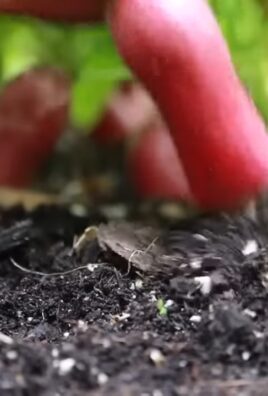
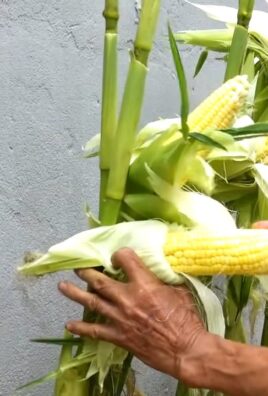
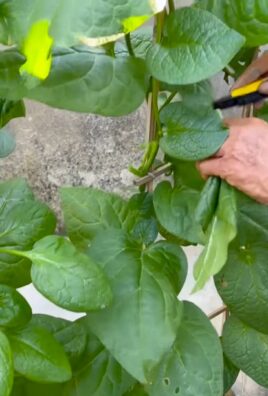
Leave a Comment